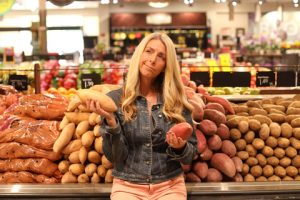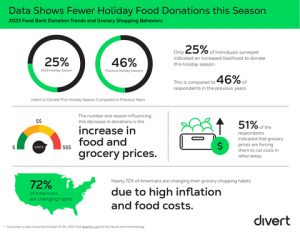 It happens every Thanksgiving. You head to the grocery store to shop for the big day. Of course, you’ll need to buy yams for the family’s favorite casserole. But when you get to the produce department, the display sign says “sweetpotato.” Or perhaps some are labeled as “yams” and others are “sweetpotatoes.” Which should you buy? And what’s the difference between a sweetpotato and a yam anyway?
It happens every Thanksgiving. You head to the grocery store to shop for the big day. Of course, you’ll need to buy yams for the family’s favorite casserole. But when you get to the produce department, the display sign says “sweetpotato.” Or perhaps some are labeled as “yams” and others are “sweetpotatoes.” Which should you buy? And what’s the difference between a sweetpotato and a yam anyway?
This Thanksgiving, California sweetpotato farmers are on a mission to end this confusion once and for all. Their message is really very simple: Yam = Sweetpotato
“Sweetpotatoes come in all kinds of colors – red, orange, white, and, even purple. You may see them labeled as yams in the grocery store, but they’re actually sweetpotatoes,” explains Sarah Alvernaz, who farms sweetpotatoes in the heart of California’s sweetpotato growing region.
Alvernaz and other California growers who make up the California Sweetpotato Council are working to educate consumers and put an end to all the confusion about sweetpotatoes versus yams, particularly for younger consumers who may not be interested in eating yams but have heard that sweetpotatoes are a superfood.
“True yams are very different from sweetpotatoes and are a starchy, tuberous vegetable mostly grown in Africa,” explains Alvernaz. “You are unlikely to find true yams at a U.S. supermarket, despite what you might see on display signs.”
Unlike yams, sweetpotatoes are native to the Americas. The United States produces approximately 1.7 million tons of sweetpotatoes each year. California is the second largest producing state for sweetpotatoes because the warm dry climate and sandy soils of California’s Central Valley provide the optimum growing environment for quality roots. Some 90 percent of California’s sweetpotatoes are grown within a 20-mile radius of the small town of Livingston and the remaining 10 percent are grown near Bakersfield.
Alvernaz also explains that it’s common to see some sweetpotatoes at your grocery store labeled by varietal names such as Covington, Garnet or Jewell. But growers actually produce dozens of different varieties.
“We’re encouraging retailers to label sweetpotatoes according to color,” notes Alvernaz. “Most varieties we grow can be accurately categorized as either red, orange, white or purple sweetpotatoes. All four types have similar cooking times and can be used pretty much interchangeably in recipes.”
“We just want people to know that sweetpotato is a modern, more accurate term than yam,” says Alvernaz. “Even if they’re labeled as yams in the store, they are sweetpotatoes! Whether they’re red, orange, white or purple – all can be used in any recipe that calls for yams. Sweetpotatoes are a versatile, delicious superfood available every day of the year.”
To help support this message, the California Sweetpotato Council is working with retailers to correctly label sweetpotatoes in their stores. Shoppers can find simplified, updated information about sweetpotatoes here.
“Rest assured the Thanksgiving yam dish that’s been in your family for generations has always been made with sweetpotatoes,” says Alvernaz. “Probably with red or orange varieties but go ahead and buy whatever color you find in your store. And don’t forget that sweetpotatoes can be used in a variety of recipes not just for the holidays.”
Alvernaz adds that sweetpotatoes are, in fact, a superfood with each containing over 80 nutrients. They’re high in vitamin B6, vitamin A, carotene, and potassium, they’re rich in antioxidant vitamins C and E and are a great source of manganese and dietary fiber.
More information about sweetpotato nutrition, cooking facts and delicious recipes can be found at the California Sweetpotato Council website here.
For the record, the council says it’s sweetpotato, not sweet potato: On this one we admit there’s not a lot of agreement. But we believe that “sweetpotato” is correct because our product is not, in fact, a sweet potato. It’s not a potato at all, but botanically an entirely different vegetable, gifted with a totally different set of better-for-you nutrients, amazing taste, and incredible versatility. So sweetpotatoes—one word—is not only grammatically correct, but it helps make the distinction.
For more news of interest to the specialty food industry, subscribe to Gourmet News.

